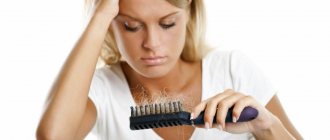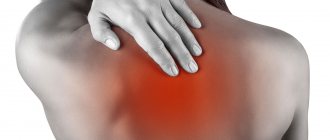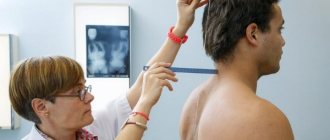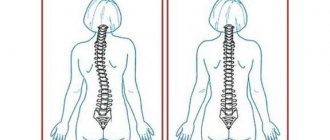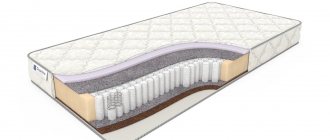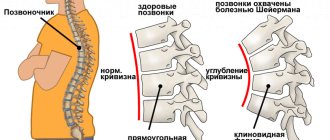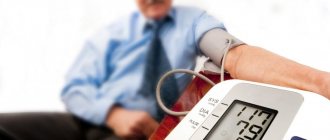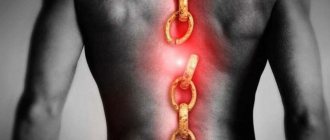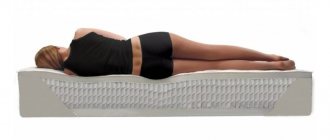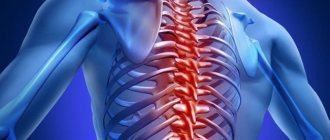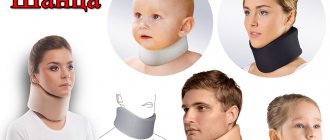A straight back, an open face, an easy gait and a smile on the face make a person more attractive and conducive to communication. In addition, a healthy back promotes the correct arrangement of organs, eliminates pinched nerves, promotes good blood flow, digestion, etc. This not only improves appearance and gives confidence, but also eliminates a number of serious diseases of a nervous and other nature. It is necessary to develop and maintain correct posture from early childhood to old age. As soon as the body begins to “bend” and “curve”, the age-related processes of aging of the body and many diseases of the internal organs are immediately activated.
Causes of spinal curvature
When we sit, walk incorrectly, carry unevenly distributed weights, lead a sedentary lifestyle, various anomalies appear and then become fixed, which are expressed in the curvature of the spine. These are stoop, scoliosis, back asymmetry, etc. In addition to the fact that this affects appearance, advanced variants of spinal curvature and accompanying phenomena affect health. To avoid such developments, it is necessary to pay serious attention to the formation of a healthy back from childhood.
Reminder on the prevention of spinal curvature
- Physical activity. Regular training in the gym or at home will help strengthen the muscle corset, which supports the physiologically correct position of the spine, will tone vital muscle groups and improve blood circulation. The following will be useful: active walking, dancing, swimming in the pool, etc. Movement is life.
- Assess the hardness of your bed. A bed covering that is too smooth and hard is only indicated after certain injuries and for newborn children.
- Determining whether a mattress is right for you is easy. Lie on your side (in a position that is comfortable for you) and ask someone to see how straight your spine is. If sharp transitions are visible, your mattress is either too soft or too hard for you.
- The cause of spinal curvature can be flat feet and myopia. Corrective shoes and contact lenses will help you stop slouching.
- Do not carry heavy bags or packages on one arm or shoulder strap. If you suspect back problems, choose comfortable backpacks and briefcases with an even distribution of weight on the back (this is especially true for school-age children and students).
- If you have a low level of activity (sedentary work, reading a book, etc.), try to get up and stretch at least once every 40–45 minutes, and also change your position.
- Include foods rich in protein, calcium, phosphorus, magnesium, zinc and vitamin D in your diet.
Crooked posture in children
In childhood, when, along with the formation of internal organs, the skeleton is strengthened and stabilized, attention to posture should be especially careful. The child subconsciously chooses the most comfortable position for himself when sitting at the table while playing or doing homework, while sleeping, etc. He slouches when walking, leans low at the table while studying, changes the body's center of gravity when sitting in front of a computer, carries a heavy briefcase, shifting his balance deep to the side, etc. Therefore, parents must constantly monitor the child, properly prepare the workplace for study, engage the child in sports that support posture, such as swimming, prepare an appropriate place to sleep with a hard mattress and a properly selected pillow, replace the briefcase with a backpack, etc. The child gradually gets used to walking, sitting, lying, etc. correctly. We should not forget that children always imitate their parents, so it is important to control their own posture.
Prevention of childhood scoliosis, or how to prevent the development of the disease
Back problems can be prevented from the first days of a child’s life. Since the bones of his skeleton have not yet become strong, it is necessary to pay close attention to the following points:
- It is necessary to ensure that the child’s head is not turned only in one direction all the time.
- Doctors believe that there is no need to use a pillow up to 3 years:
- When a child is learning to walk, you do not need to hold him constantly by the same hand, this threatens the development of a process such as spinal curvature
.
Most cases of the disease are associated with the start of school attendance. The same posture, the inability to move, non-anatomical furniture for classes - all this leads to back problems.
Reasons why back problems develop:
- Underdevelopment of the back muscles;
- Eye diseases;
- Poorly organized workplace, poor lighting;
- Physical inactivity;
- The mattress is too soft.
Another factor in the development of scoliosis is stress. People who are stressed are more likely to slouch, and this becomes their habitual posture. It is known that people under stress are most often depicted with drooping shoulders and a hunched back. If a person gets used to being in this position, then the spine remembers this position.
Exercise as a help for back problems
We offer several techniques to relieve tension from the back muscles:
- Bring your shoulder blades together as much as possible and hold them in this position for 10-15 seconds. Do 5-10 repetitions.
- Raise your left shoulder, hold it for 10-15 seconds, repeat with your right shoulder. Repeat 5-7 times for each shoulder.
- Move your shoulder in a circle as far as possible. Repeat with the second shoulder.
Therapeutic exercise for the prevention and treatment of scoliosis
A complex of physical therapy is prescribed by a doctor to select the optimal exercises for each specific case. Therapeutic exercise helps:
- Improve posture;
- Strengthen and develop muscles and ligaments;
- Form the correct muscle corset.
Swimming as a prevention of scoliosis
The benefits of swimming for diseases and curvature of the spine are obtained by relaxing the muscles that are constantly tense to keep the body in an upright position. In addition, skeletal muscles are strengthened, which are not used during normal walking. A consultation with a doctor is necessary to select the optimal set of water activities.
Massage as an effective means of preventing scoliosis
An important part of the prevention and treatment of existing scoliosis is regular massage courses. Therapeutic massage for scoliosis is a specific type of manual manipulation of the spine to correct curvature. The effect is achieved after 2 weeks of daily massage. The course must be repeated every six months, unless otherwise recommended by your doctor. There are contraindications:
- Exacerbations of chronic diseases;
- Diseases of the liver, kidneys, heart (severe pathologies);
- Skin diseases.
To help a child with scoliosis, parents can learn massage techniques themselves and carry out appropriate manipulations at home.
Orthopedic shoes and scoliosis
As is known, flat feet provokes the development of scoliosis. Due to a shift in the center of gravity, the balance of the body is disrupted, and accordingly, the spine is also bent. It is impossible to cure flat feet, but a timely visit to an orthopedic doctor will help you choose a complex of physical therapy, as well as special exercises for the foot, to curb the development of the disease. Custom-made orthotic insoles will help give the foot the correct shape and keep the axis of the body in a straight position. This improves the condition of a patient with flat feet. If nothing is done about the problem, this leads to the appearance of painful bones on the legs.
What shoes should I choose for my child to prevent flat feet? General requirements:
- The heel should be no higher than 2-3 cm.
- The heel of the shoe should be firm for better support of the foot.
- In the area of the bend of the foot, the sole of the shoe should bend easily and without effort. Children's shoes themselves should be light.
How to choose the right backpack for a child
When choosing a backpack for your child to wear every day, you should adhere to the following advice from doctors:
- The backpack has a hard back.
- Wide straps on the backpack so that the load is distributed evenly. It is important to ensure that the straps are the same length.
- You cannot buy a larger briefcase than the child needs.
- You should not overload your backpack with unnecessary things; it should not be too heavy.
- Both straps must be worn during use. Otherwise, there is a high risk of developing spinal distortion.
Physiotherapy in the treatment and prevention of childhood scoliosis
Physiotherapy is prescribed for any problems with the spine, because its effectiveness has been proven over years of practice. Typically, for back problems, the following types of physiotherapy are prescribed, one by one or in combination, depending on the specifics and severity of the disease:
- UHF. A session of 20-30 minutes helps relieve pain and spasms.
- Electrophoresis. Using this technique, it is possible to administer medications precisely to the area where it is needed.
- Thermotherapy. Effectively helps to relax muscles and warm up sore areas.
- Mud therapy. It has a general health effect and helps in the treatment of scoliosis
. - Magnetotherapy. Improves blood circulation in problem areas.
Home exercise equipment
For back problems, you can find a large number of different massagers and devices in stores.
Massagers like Drewmass, which are suitable for self-massage of the back, are useful. The main thing is regularity of exercise, and you will forget about back problems. Author: K.M.N., Academician of the Russian Academy of Medical Sciences M.A. Bobyr
What to do with crooked posture
If there is a curvature of the spine or associated back pathologies, urgent measures must be taken. First of all, visit a doctor, undergo an examination and identify the nature of changes in posture. If the curvature of the spine was identified in early childhood, by engaging in active treatment, negative trends can be eliminated. If help is needed in adulthood, when the skeleton is already formed, preventive measures can be used to relieve tension on the spine, etc. The specialist prescribes special gymnastics, sports, massage.
If necessary, temporary or permanent wearing of special corsets and other means that support the back in the correct position is recommended. An active lifestyle is also important. It should be noted that self-medication in this case is unacceptable. Without knowing the degree of curvature of the spine, the patient’s chronic diseases and the general picture of his health, one can only aggravate the situation.
How to check your posture?
- Stand up straight, relax your shoulders, arms and back. Ask someone to evaluate how even the height of the shoulder line and the position of the shoulder blades are. If the asymmetry is clearly visible, you need to consult an orthopedist. A slight difference in the position of the shoulders is acceptable, since in general the human body is not absolutely symmetrical.
- The second method is familiar from childhood: approach the wall with your back. If your shoulders and buttocks touch the wall at the same time, everything is fine. If your buttocks or shoulders do not touch the wall at the same time, this may be a sign of a curve.
- An orthopedist will give you the most clear and objective assessment of the state of health of your body. Remember, any disease is easier to prevent at its inception stage!
*All information in the article is provided for informational purposes. Before choosing an orthopedic mattress for diseases of the back and spine, consult your doctor.
Rachiocampsis
5/5 3 votes.
Article written according to scientific standards and reviewed by a medical professional
This text is consistent with medical literature, medical guidelines, and current research and has been reviewed by medical professionals. Sources and author.
Spinal curvature is a problem that cannot be ignored. It entails not only serious violations of posture, but also a malfunction in the functioning of internal organs. Therefore, at the first symptoms, you should definitely consult a doctor. Moreover, the effectiveness of treatment directly depends on when the curvature of the spine was diagnosed.
Curvature of the spine and its types
Spinal curvature is a disorder in the spinal column, or more precisely, a pathological change in its configuration. Normally, the human spine from the outside looks like an S symbol with moderate curves in the thoracic and lumbar regions. And in profile and full face it seems completely smooth. If these curves are too deep, or the “straight back” is disturbed, we are talking about pathology.
There are three pathological curvatures of the spine:
- Lordosis is when the curves in the cervical or lumbar regions protrude too far forward.
- Kyphosis is a violation of the bend in the thoracic region, or “humpback”.
- Scoliosis is a sideways curvature of the spinal column, which can form in any part.
According to statistics, in Ukraine, spinal curvature is diagnosed in 5 people out of 1000. That is, every 200 Ukrainians have serious problems with posture and related diseases.
Lordosis, kyphosis and scoliosis: how to distinguish?
All three pathologies have one thing in common - they can be dangerous if left untreated. Any curvature in any of the departments can negatively affect the functioning of the internal organs that are located there. In the same way, the presence of disturbances in the configuration of the spine is fraught with pain and visual deterioration of posture.
Moreover, each of the pathologies has distinctive features:
Lordosis is a forward curvature of the spine. It happens:
- Arc-shaped.
- Angular.
Dangerous due to changes in the position of internal organs, nerves and blood vessels.
Kyphosis is a backward curvature of the spinal column. There are the following types:
- Arc-shaped.
- Angular.
The main danger is disruption of the respiratory system, when the lungs do not have enough oxygen for complete gas exchange.
Scoliosis is a sideways curvature of the spine. There are such forms of the disease:
- Smooth or C-shaped;
- Sharp or S-shaped;
- Z-shaped.
If scoliosis is not treated, it can develop into intervertebral hernias.
To recognize spinal curvature in yourself or your child, it is enough to notice the first alarming symptoms:
- Fatigue;
- Numbness of the limbs;
- Frequent dizziness;
- Malfunctions of the genitourinary system;
- General deterioration in health;
- Visual changes in posture.
You can also use the symptoms to determine which department the problem may be in:
- Curvature in the cervical spine will reveal itself through numbness of the upper extremities, numbness of the tongue, asymmetry of the shoulders, throbbing headache, and disruption of the thyroid gland.
- A curvature in the thoracic region will be signaled by a distortion of the pelvis, back pain, pain in the heart area, a noticeable “hump” on the back, the development of respiratory failure, and a sinking of the chest.
- Curvature in the lumbar region will be indicated by pain in the lower extremities and hips, muscle spasms, changes in gait, and disturbances in the functioning of internal organs.
Any curvature can lead to the fact that the load on the spine will be distributed unevenly. And this will entail a malfunction of the internal organs, salt deposition, deformation of the spinal nerves, and other unpleasant consequences.
Causes of pathological curvature of the spine
Why can the configuration of the spinal column change? There are many reasons for this. They are divided into:
Congenital:
- Intrauterine trauma;
- Genetic predisposition;
- Dangerous infections.
Purchased:
- Injuries;
- Fractures;
- Rickets;
- Osteoporosis;
- Muscle dystrophy;
- Polio;
- Tuberculosis;
- Paralysis;
- Dysplasia;
- Myositis;
- Neurological pathologies (cerebral palsy, syringomyelia, etc.)
- Tumors;
- Unilateral pain syndrome;
- Incorrect body position when sitting or walking;
- Physical inactivity.
To prevent complications of kyphosis, lordosis or scoliosis, it is important to diagnose the problem in time and determine its root cause. Effective treatment means eliminating the cause and competently dealing with the consequences.
Curvature of the spine in children
It is also important to understand that the sooner you notice a problem, the easier it will be to deal with it. Indeed, in many cases, spinal pathologies appear in early childhood. If you miss the first symptoms, the curvature will grow with the child. And when the son or daughter reaches 18 years of age, the skeleton will be fully formed. And trying to fix something will be much more difficult.
Scoliosis is most often diagnosed in children. It can be either congenital or caused by incorrect posture of the child. When a boy or girl sits incorrectly at the table, reading a book. Problems can also arise due to the impatience of parents who are trying to teach the baby to sit independently as quickly as possible. Or they buy a walker so that he can start walking faster. Muscles that are not yet strong enough for such loads cannot cope. And curvature develops.
Among the factors that provoke the development of kyphosis in children are spinal injuries and muscle weakness.
Overweight children are more prone to lordosis.
If your child complains of fatigue, you notice a change in gait or asymmetry of the spine, or hear complaints of pain in the back or chest, be sure to visit a pediatrician first, and then an orthopedist. The health of a child is the responsibility of his parents.
When spinal curvature is a pathology: diagnosis and treatment
To confirm or refute concerns about problems with the spine, the doctor will visually assess the symmetry of the spine and refer you to undergo x-ray diagnostics. X-rays will allow you to most accurately determine the degree of curvature and localization of the problem. An ECG, MRI or other tests may also be needed.
Treatment of spinal curvature can be conservative or surgical. Conservative methods include:
- Exercise therapy – special exercises are selected directly by the doctor and for each specific patient.
- Wearing special corsets - the period of wearing the corset and the time of wearing it are determined depending on the degree of curvature and the age of the patient.
- Physiotherapy to relieve pain. Massage.
Drug treatment may also be prescribed to relieve pain and enrich the body with essential vitamins and microelements.
Massage for spinal curvature
Massage is one of the indispensable methods of combating spinal curvature. But only under one condition - all manipulations must be done by a specialist. You cannot experiment with the spine - the health of the whole organism depends on it. Therefore, doing a massage yourself using a video on the Internet is a big risk and of dubious benefit.
Professional massage for spinal curvature can:
- Relieve pain syndrome;
- Improves blood circulation, which means improves the supply of oxygen and nutrients;
- Normalize muscle tone, strengthen them and relieve tension.
To see the effect of the procedures, you need to undergo several massage courses.
Prevention of pathological curvature of the spine
And so as not to have to be treated and corrected, it is better to prevent spinal curvature in advance. To do this you need:
- Distribute the load on the spine evenly and wisely, especially if we are talking about children;
- Eat healthy, consume enough vitamins and microelements;
- Spend a lot of time outdoors;
- Ensure comfortable sleep on the right mattress;
- Don’t forget about daily morning exercises;
- Watch your posture. Plan to visit an orthopedic doctor.
Also, when the issue concerns children, it is very important not to rush the child in his development. The baby should sit up on his own when his muscles are ready for this. He should stand on his feet when the leg muscles are sufficiently strong. He should start walking when the body can withstand such a load. And not before.
Curvature of the spine - lordosis, kyphosis and scoliosis - are problems that may not make themselves felt for many years, only occasionally hinting at the formation of pathology. Listen to your body and love yourself enough to prevent the development of curvature or at least stop it in time.
All information presented in the blog is for informational purposes only and does not replace an in-person consultation with a doctor!
Make an appointment with a specialist
Still have questions? Ask!
Sources:
- https://medical-dictionary.thefreedictionary.com/rachiocampsis
- https://www.webmd.com/back-pain/qa/what-are-the-types-of-spine-curvature-disorders
- https://mayfieldclinic.com/pe-scoliosis.htm
- https://www.medicinenet.com/scoliosis/article.htm#what_are_the_causes_of_other_types_of_scoliosis
- https://www.treatingscoliosis.com/blog/does-massage-therapy-help-with-scoliosis/
+0-0 0 vote.
